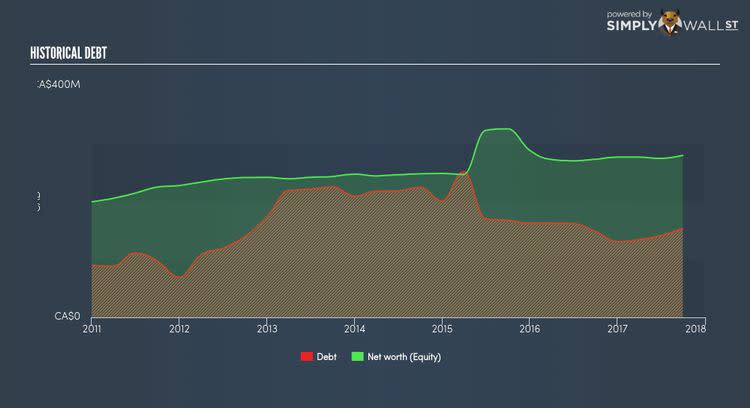What Investors Should Know About Wajax Corporation’s (TSX:WJX) Financial Strength

Wajax Corporation (TSX:WJX) is a small-cap stock with a market capitalization of CAD CA$469.03M. While investors primarily focus on the growth potential and competitive landscape of the small-cap companies, they end up ignoring a key aspect, which could be the biggest threat to its existence: its financial health. There are always disruptions which destabilize an existing industry, in which most small-cap companies are the first casualties. These factors make a basic understanding of a company’s financial position of utmost importance for a potential investor. Here are a few basic checks that are good enough to have a broad overview of the company’s financial strength. See our latest analysis for WJX
Does WJX generate an acceptable amount of cash through operations?
While failure to manage cash has been one of the major reasons behind the demise of a lot of small businesses, mismanagement comes into the light during tough situations such as an economic recession. Furthermore, failure to service debt can hurt its reputation, making funding expensive in the future. Can WJX pay off what it owes to its debtholder by using only cash from its operational activities? Last year, WJX’s operating cash flow was 0.18x its current debt. This means, over a tenth of WJX’s near term debt can be covered by its day-to-day cash income, which somewhat reduces its riskiness to its debtholders.
Does WJX’s liquid assets cover its short-term commitments?
What about its other commitments such as payments to suppliers and salaries to its employees? In times of adverse events, WJX may need to liquidate its short-term assets to pay these immediate obligations. We should examine if the company’s cash and short-term investment levels match its current liabilities. Our analysis shows that WJX does have enough liquid assets on hand to meet its upcoming liabilities, which lowers our concerns should adverse events arise.
Is WJX’s level of debt at an acceptable level?
Debt-to-equity ratio tells us how much of the asset debtors could claim if the company went out of business. WJX’s debt-to-equity ratio stands at 54.97%, which means, while the company’s debt could pose a problem for its earnings stability, it is not at an alarmingly high level yet. We can test if WJX’s debt levels are sustainable by measuring interest payments against earnings of a company. Ideally, earnings should cover interest by at least three times, therefore reducing concerns when profit is highly volatile. WJX’s interest on debt is sufficiently covered by earnings as it sits at around 4.87x. Lenders may be less hesitant to lend out more funding as WJX’s high interest coverage is seen as responsible and safe practice.
Next Steps:
Are you a shareholder? At its current level of cash flow coverage, WJX has room for improvement to better cushion for events which may require debt repayment. However, the company exhibits an ability to meet its near term obligations should an adverse event occur. Given that its financial position may change. You should always be researching market expectations for WJX’s future growth on our free analysis platform.
Are you a potential investor? Though short-term liquidity isn’t a concern, WJX’s high debt levels on top of low cash coverage of debt may not be what you’re after in an investment. However, keep in mind that this is a point-in-time analysis, and today’s performance may not be representative of WJX’s track record. You should continue your analysis by taking a look at WJX’s past performance analysis on our free platform in order to determine for yourself whether its debt position is justified.
To help readers see pass the short term volatility of the financial market, we aim to bring you a long-term focused research analysis purely driven by fundamental data. Note that our analysis does not factor in the latest price sensitive company announcements.
The author is an independent contributor and at the time of publication had no position in the stocks mentioned.

